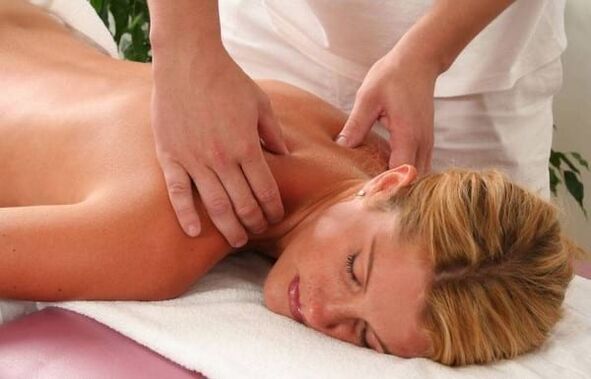
Symptoms of cervical osteochondrosis may appear at any age, but the risk increases after 25 years.The sooner the treatment begins, the greater the chance of stopping the disease in the bud and avoiding unpleasant complications.
Symptoms of osteochondrosis of the cervical spine
At the initial stage of the disease, the signs of the cervical spine can be lubricated, episodically, and not immediately warned the patient.
Osteochondrosis-More than deformity of the spine, which is associated with degenerative (devastating) processes that are happy in it.
The reasons may be different:
- Persistent physical overload, uneven muscle stretching, staying in a static position (sitting on a computer, driving a car);
- Neck injuries;
- Improper nutrition with fatty, salty, heated foods;
- Alcohol abuse and cigarettes;
- Metabolic and endocrine disorders.
People at risk for inherited, overweight, and patients with rheumatism.Syller, severe stress, can provoke cervical osteochondrosis exacerbation.
Under the influence of external or internal factors of the spine, abnormal processes associated with changing the shape and position of the spine, refining cartilage, and bone growth.
All this causes pinches of blood vessels and nerve endings.Brain nutrition is concerned, with pain and discomfort.
Symptoms of cervical osteochondrosis include:
- Headache and dizziness;
- Weakness, prefabricated condition, poorly;
- A feeling of general hardship, weakness, constant fatigue;
- Pain in the neck, spark, shoulder girdle, turning to the head.
At the same time, visual nonsense can be reduced, hearing impairment, patients complain of noise in the ears and "flying" in front of their eyes.The symptoms described are the result of innervation disorders.
Long-term disruption of brain blood supply causes migraine, vegetative-vascular disorders, respiratory pathologies and cardiovascular system.
The vertebrates of the cervical region are very mobility in small size, and the neck muscles are relatively weak.The cervical spine has a negative effect on static and high physical activity.
The degree of disease
There is 4 degrees Cervical osteochondrosis.Each of them corresponds to their own symptoms, but in some cases a specialist can not only make an accurate diagnosis.
- Spine deformity is in its childhood, with cartilage and bone tissue changes are almost not noticeable, developing symptoms are episodic.Patients associate pain and discomfort with excessive work, stress, physical effort;
- The form and height of the intervertebral disk change, its integrity can be violated.At this point, the pain in the neck, the shoulder girdle becomes permanent.It can become blurry, it hurts.
- Intervertebral hernia, weakening of the nerves and blood vessels, causes severe headaches, weakness, dizziness, pre -fabric and exacerbation conditions.The patient feels fatigue, pain in the back, noise in the ears.
- The vertebrates are deformed, the bone growth appears on them - osteophytes of the nerves.The vertebrates of the neighboring departments are affected, the usual movements are disordered, their amplitude is reduced, each movement is accompanied by severe pain in the neck, shoulder and collapse.

Treatment of cervical osteochondrosis
In men, cervical osteochondrosis is less common than in women, it begins later, but the symptoms are more pronounced and the disease develops faster.On the first signs of the disease, it is necessary to start treatment:
- Daily gymnastics of the neck include simple exercises that develop through the spine and muscles that improve blood circulation (circular rotation of the neck, shoulder inclination, tilted back and back);
- Alcohol and oil compresses, salt heating pads (impossible to use in the acute phase) will help relieve neck pain;
- To relieve symptoms of cervical osteochondrosis, it will help to use drugs - spasms, painkillers, anti -anti -anti -anti -anti -spasms.
On the first signs of deformation processes in the cervical region, you should seek medical attention.Conservative treatment is usually prescribed:
- Physiotherapy;
- Massage (definitely - professional!);
- Taking medications that not only relieve the symptoms of the disease but also help restore cartilage tissue - chondroprotectors in tablets or injections.
Cervical osteochondrosis is easier to warn than cure.
Prophylactic measures include denial of harmful salty and heated foods, work regimen and rest, balanced physical activity.
















































